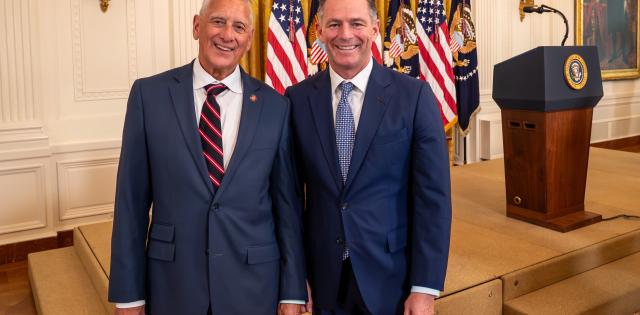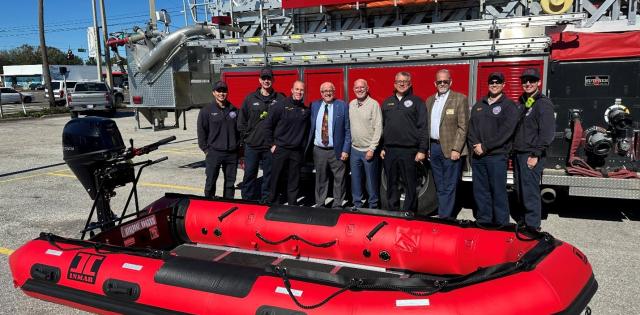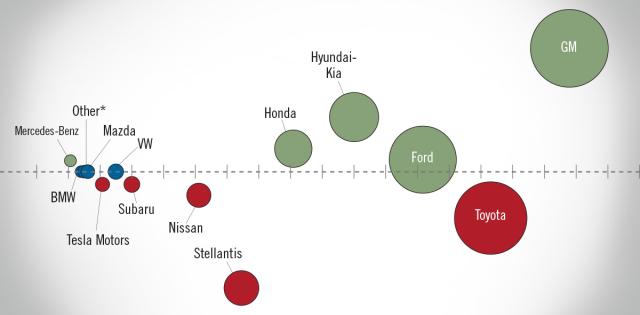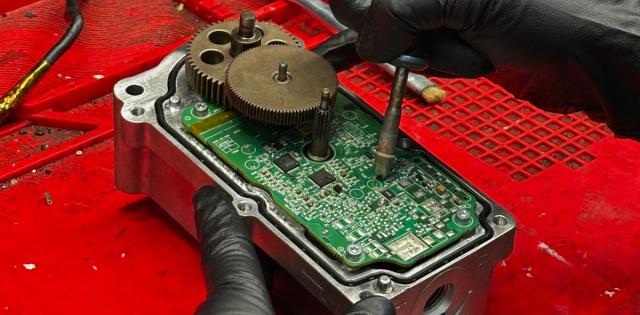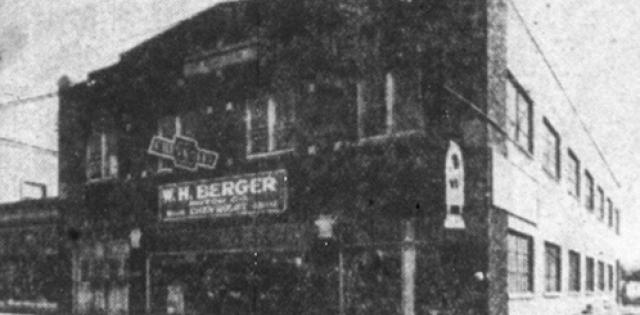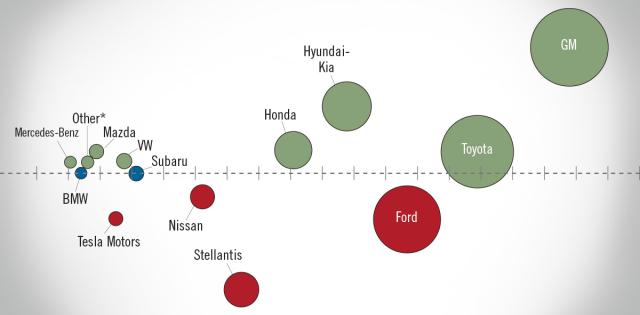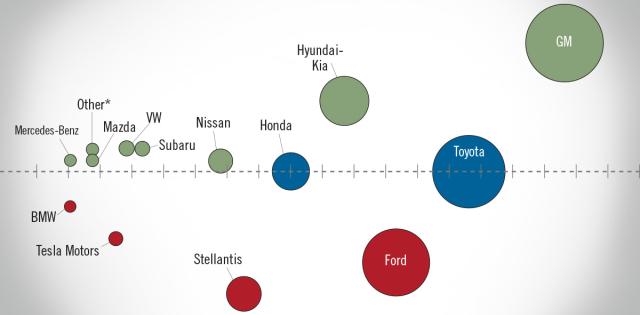For Denver, it’s about getting vocational students excited about the industry they’ll be a part of in the very near future. In D.C., the focus is on bringing together government officials from around the world to exchange ideas about emerging trends in transportation. In Philadelphia, it’s about helping kids stay warm in the winter.
For auto shows across the country, it’s about benefitting and improving their local communities any way they can – whether it’s energizing the local economy, contributing to the state and local tax base, giving to local charities, or building community goodwill.
It’s also about showcasing their cities to those who traveled near and far to attend the annual events. In fact, auto shows are an influential part of a city’s economic and tourism development landscape.
Driving Tourism in Philadelphia
For example, the Philadelphia Auto Show (Jan. 27-Feb. 4) is one of the largest auto shows in the country, has a regional economic impact of approximately $50 million, and influences $3.5 billion in consumer sales, according to Kevin Mazzucola of the Auto Dealers Association of Greater Philadelphia, the trade association representing 185 franchised new-car dealers in the five-county region.
The show is the largest consumer event in the Pennsylvania Convention Center every year, and attracts 250,000 guests annually who come to see the more than 700 vehicles showcased on the 700,000-square foot display floor—guests who might never attend an association conference or other industry-specific event held at the convention center, said John J. McNichol, president and CEO of the Pennsylvania Convention Center.
“The Auto Show gives us the opportunity to show the building to the people who paid for it. Since this is a public authority and it was paid for through taxpayer dollars, these are really critically important opportunities for the public to come in and enjoy the building that they built through their tax dollars,” said McNichol. “They [the auto dealers] create a very vibrant, energetic environment. There’s all these beautiful, shiny new vehicles coming into the building, and it creates a great environment for people to come in and actually enjoy the asset. That’s the real intangible—there are only a few times throughout the year when the building is truly open to the public to come in and enjoy the asset.”
Those 250,000 guests will also patronize the restaurants, bars and hotels in the downtown Philadelphia area, McNichol noted. “When they leave, they go over to our Reading Terminal Market, or they go over to one of the shows at one of our great theaters, or go to one of our great museums, or they may walk down to Independence Mall and enjoy the city in some other way. So it’s a great way to invite people down into city center to enjoy all Philadelphia has to offer,” he said. “Not only are they a gate show to try to market cars, and trying to do a good job for the manufacturers who exhibit here, but at the same time, they’re also selling Philadelphia, and that partnership is invaluable.”
Beyond the tourism benefits, the symbiotic relationship between the convention center and the Auto Show also benefits the city’s labor market. It takes 25,000 man hours to bring the show to life, Mazzucola noted. “It’s good jobs. Good work indoors in January in Philadelphia, I can assure you of that,” he chuckled.
McNichols agreed. “It’s a predictable piece of business. It keeps our workforce sharp, and they’re great partners. This auto show really gets it.”
Hitting the Gas on Jobs in Colorado
Creating jobs in the community and excitement around careers in the auto industry will be a big part of this year’s Denver Auto Show (April 4-8). “There’s a shortage of auto techs in dealerships, so we’ll have a job fair for auto techs and other positions in the dealerships,” explained Tim Jackson, director of the Colorado Automobile Dealers Association (CADA), which puts on the show. Qualified applicants can sign up to meet and interview onsite with some of the 400 new-car and RV dealerships that make up Colorado’s auto industry.
The Denver Auto Show will also offer students at area community colleges and trade schools free entry to the show with the goal of getting this future workforce focused on the industry and the careers awaiting them. CADA works closely with Lincoln Tech Denver and Emily Griffith Technical College, which enrolls approximately 500 auto tech students at any given time, as well as Arapahoe Community College, Aims Community College, Front Range Community College and Pikes Peak Community College.
CADA will also release its latest economic impact report ahead of this year’s show, which highlights the $60 million impact of the 2017 show on the seven-county Denver Metro Area economy. In addition, the show supported as many as 490 jobs in the local economy. “Sixty million dollars is a huge economic impact,” Jackson said. “That’s just the show itself as an event—people coming to town for the show and purchasing that $13 ticket. But people don’t just buy a ticket. They go to dinner. They’ll stay overnight, go to a movie, buy gifts and other items.”
The economic benefits extend beyond the five days of the show, Jackson noted. “Some will actually buy a car and that helps … quite a bit. Just the intenders that buy cars within the next 4-to-6 months after attending the show really elevate the economic impact of the show.” In fact, the auto industry in Colorado, including new and used car sales and service, generates up to 22 percent of the total sales tax revenue for the state and local coffers.
Propelling Public Policy in D.C.
It’s probably not that surprising that an auto show in D.C. would attract a community of attendees steeped in (and sometimes even divided by) politics and policy. But the 2018 Washington Auto Show (Jan. 26-Feb. 4) was unique in that the show and its organizers have the explicit goal of actually encouraging debate and impacting federal policy.
The show, held in the Walter E. Washington Convention Center, was preceded by two show-sponsored industry events: Public Policy Days and the MobilityTalks International Conference. Over the course of three days before the official show, industry leaders, global public policy makers and members of Congress gathered to discuss proposed and existing rules and laws governing the automotive industry. “The focus of the conference is to bring together worldwide regulators from car-producing nations to have a peer-to-peer exchange of best practices, because nobody really knows what the rules are for driverless cars,” said John O'Donnell, president of the Washington Area New Automobile Dealers Association. “We made history with the first Senate field hearing in D.C., as well as the first at an auto show (the Senate Commerce Committee), … We followed it up the very next day by hosting a Senate Energy Committee hearing on site.”
The added events also help bring in additional D.C. visitors, which satisfies the city’s convention and tourism organizations. “We do have a very significant economic impact on the city,” O’Donnell explained. “We also suffer from the pressure to produce heads-in-beds, which is satisfied in large part by MobilityTalks International. We’re now getting international travelers as well as those from all over the U.S. coming to D.C. to attend this conference because we have that public policy niche.”
Giving Back
Across the board, all auto shows help build communities and give generously to local charities. The Philadelphia Auto Show has donated more than 315,000 coats to local children who need them the most through its Auto Dealers CARing for Kids Foundation and More Than Auto Dealers initiative. Since 1986, the organization has also donated $7.5 million in proceeds from their pre-Auto Show “Black Tie Tailgate” event to the Children’s Hospital of Philadelphia. Similarly, the Colorado Automobile Dealers Association has created its Clear the Air Foundation, which strives to lessen the amount of pollution emitted by old or improperly maintained vehicles on Colorado’s roads. A portion of the proceeds from the Denver Auto Show’s preview gala benefit Clear the Air and the Denver Post Community Foundation. This year’s event is expected to raise more than $300,000. The Washington Auto Show, meanwhile, turned over 8,000-square feet of exhibition space to D.C.-area street artists for the 3rd annual ART-of-Motion exhibit by Automotive Rhythms. Designers painted vehicles and murals in real time for show-goers to experience. The Auto Show organizers also teamed up with Queer4Cars.com to host LGBTQ Family Night with an after-party hosted by Toyota and Lexus.
Auto Shows and Cities: An Interconnected Community
No doubt cities get the benefit of positive publicity whenever an auto show takes over a convention center, as well as the direct economic impact, which is often massive. The recent Detroit Auto Show is expected to “have an estimated economic impact of $480 million to the regional economy—the equivalent to holding nearly two NFL Super Bowls a year in Detroit,” according to The North American International Auto Show (NAIAS).
But while the financial benefits are significant, the impact of auto shows across the country is perhaps even more impactful for the communities they serve.
“We look at the Philadelphia Show as an institution and we are the curators of that institution,” said Mazzucola. “We know how important it is to the dealers. We know how important it is to the manufacturers. But [ultimately], we know how important it is to the consumer and the attendees here in the greater Philadelphia area.”



